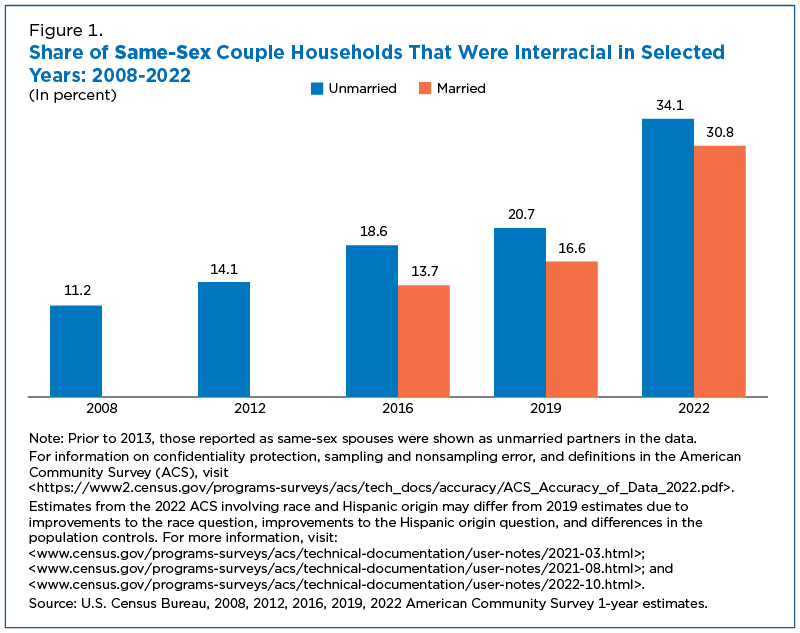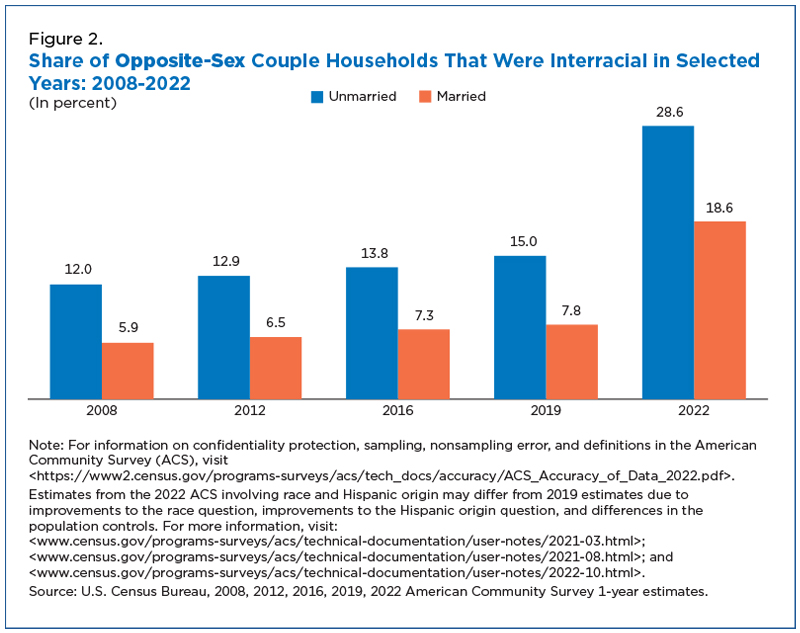Some Demographic and Economic Characteristics of Male and Female Same-Sex Couples Differed
About 31% of married same-sex couples were interracial in 2022, much higher than the 19% of married opposite-sex couples that were interracial.
Interracial couple households were also more common among same-sex (34%) than opposite-sex (29%) unmarried couples.
Among married same-sex couples, a larger share of male (37%) than female (25%) couples were interracial. Similarly, a larger share of unmarried male same-sex (39%) than female same-sex (29%) couples were interracial.
In 2022, there were about 1.3 million same-sex couple households in the United States. Roughly 740,000 were married and 540,000 unmarried.
The U.S. Census Bureau’s recently released package of tables and graphics provides these and other estimates on the characteristics of same-sex couple households based on American Community Survey (ACS) data.
Among highlights:
- In 2022, there were about 1.3 million same-sex couple households in the United States. Roughly 740,000 were married and 540,000 unmarried.
- The average age of householders in same-sex married couples (48.6 years) was lower than in opposite-sex married couples (52.9 years), but the average age of householders in same-sex unmarried couples (40.9 years) was higher than in opposite-sex unmarried couples (39.8 years).
- Among married couple households, it was more common for both partners in same-sex (62%) than in opposite-sex (49%) households to be employed.
- A larger share of opposite-sex (82%) than same-sex (73%) married couples owned their home.
- The share of female and male same-sex couples with both partners employed did not differ significantly. Yet the median household income of female same-sex couples was less ($98,420) than of male same-sex couples ($127,900).
- A larger share of both partners in same-sex (32%) than in opposite-sex (18%) unmarried couples had at least a bachelor’s degree.
The ACS does not identify all couples living together since it only collects information about each household member’s relationship to the householder, rather than about the relationships among all household members.
More information on the ways the Census Bureau has changed how it collects information about same-sex couples over time is available.
Related Statistics
Stats for Stories
Subscribe
Our email newsletter is sent out on the day we publish a story. Get an alert directly in your inbox to read, share and blog about our newest stories.
Contact our Public Information Office for media inquiries or interviews.








